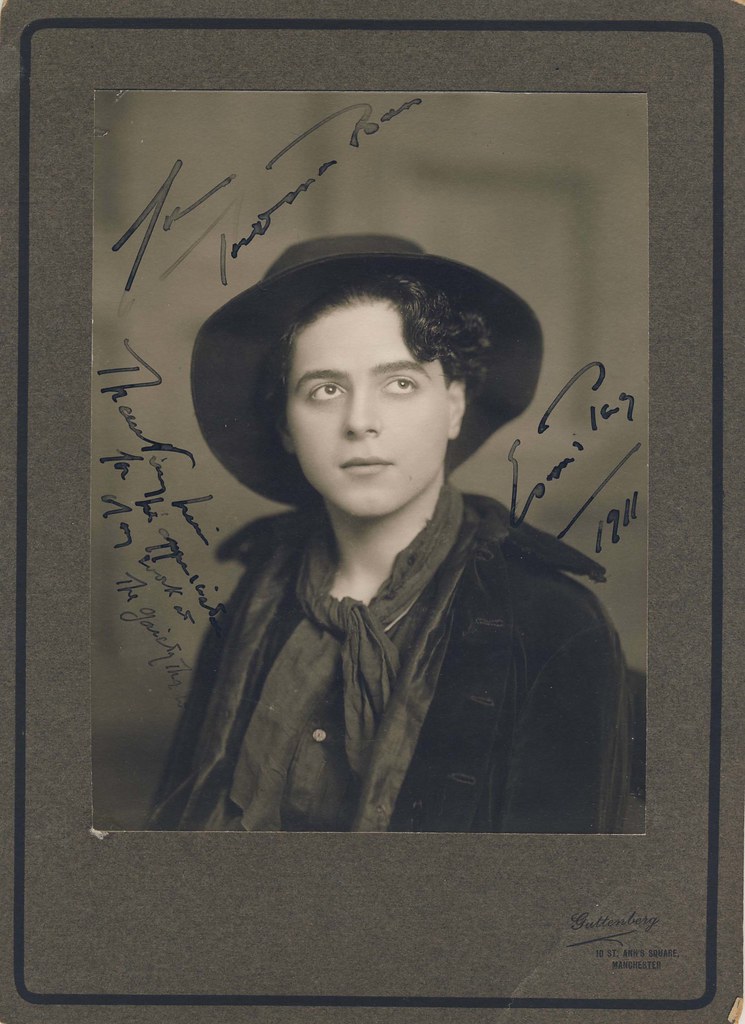

Queer Places:
St Mary's Roman Catholic Cemetery
Kensal Green, London Borough of Brent, Greater London, England
 Saville Esmé Percy (8 August 1887 – 17 June 1957) was an English
film actor. He appeared in 40 films between 1930 and 1956. He was born in
London and died in
Brighton.[1]
Saville Esmé Percy (8 August 1887 – 17 June 1957) was an English
film actor. He appeared in 40 films between 1930 and 1956. He was born in
London and died in
Brighton.[1]
Esmé Saville Percy was a distinguished thespian of the English stage, born
in London of French ancestry. He studied acting under
Sarah Bernhardt and at the
Brussels Conservatoire, making his theatrical debut in 1904. As a young man,
he was noted for his good looks. As Percy advanced to star status, he gained a
singular reputation as a leading interpreter of roles in plays by George
Bernard Shaw. This began as early as March 1928, when he appeared in a radio
production of "Man of Destiny", as Napoleon Bonaparte. In 1913, he set up a
touring company, specialising in Shavian plays. At the end of World War I, he
ran a theatre in Cologne, entertaining British troops as Professor Henry
Higgins in "My Fair Lady", co-starring opposite Mrs. Patrick Campbell.
By the 1920's, Percy's looks had become somewhat dissipated. He was now rather
plump, his nose broken in an accident and he had lost an eye after 'a playful
mishap' involving a Great Dane. The resulting glass eye proved frequently
disconcerting to other cast members, especially during a 1949 performance of
"The Lady's Not for Burning", when it popped out and rolled across the floor.
He wore an eye patch during subsequent performances.
No longer a star, Percy entered films in 1930 as a
character actor. He came to specialise in period drama, often as indeterminate
ethnic types. In this vein, he was particularly effective as Count Aristide
Karpathy in Pygmalion (1938), a role written for him by Shaw himself. Other
eminent historical personae in Percy's repertoire included Samuel Pepys in
Nell Gwyn (1934), Lloyd George in
Royal Cavalcade
(1935) and Napoleon Bonaparte in
Invitation to
the Waltz (1935). He also appeared in
Murder!
(1930), an early
Alfred Hitchcock. Percy's supporting role in the espionage thriller
On Secret
Service (1933) was described by the New York Times as "an excellently
drawn characterisation" (Feb. 10, 1936).
Percy made several television
appearances during the last few years of his life (among them, reprising his
comic role of Matthew Skipps in "The Lady's Not for Burning" for the BBC) and
acted with the English Stage Company at the Royal Court Theatre. He died in
June 1957 at the age of 69.
After 1919, the dancer Ivor Novello and the actor Noël Coward perpetuated the homosexual myth in the world of entertainment. All his life, Coward distinguished himself by his relative discretion; he never made a public statement about his homosexuality and, while his immediate entourage was perfectly aware of his tastes, those watching his ambiguous plays often remained unaware of the subtext. Still, he helped to popularize the image of the chic, decadent homosexual on the British stage in the 1920s. In The Young Idea (1923), the two heroes, Sholto and Gerda, embody the two extremes of the androgynous fashion, the effeminate boy and the flapper. In The Vortex (1924), Nicki Lancaster takes drugs, which was interpreted by critics as a substitute for homosexuality. In 1929, he put together Bitter Sweet, a musical based on the homosexuality of the Oscar Wilde generation, in another skillful maneuver. One outstandingly transparent allusion is in the line, "We are the reason for the 'Nineties' being gay." And, finally, in Design for Living (1930), he broaches the topic of bisexuality.
The best-known English actors of the time, John Gielgud, Max Adrian, Gyles Isham, Henry Kendall, Charles Laughton, Ernest Milton, Esme Percy, Eric Portman, Ernest Thesiger and Frank Vosper, were homosexual or bisexual. Many homosexuals were also found in the fashion and art world, in particular, in England, the interior decorator John Fowler, the set designer Oliver Messel, the great dressmaker Norman Hartnell and the photographer Cecil Beaton.
England's two favorite authors of comedies and musicals, Noël Coward and Ivor Novello,
whose sexual orientation was common knowledge in theatrical circles, remained closeted to the general public; the campiness of their works was put down to
"sophistication". The same held true for such important playwrights and actors
as Somerset Maugham, Terence Rattigan, Michael Redgrave, Charles Laughton, Emlyn Williams, Esme Percy, Ernest Milton,
Gwen Ffrangcon-Davies, and John Gielgud
(even after Gielgud had been arrested for public indecency), as well as for the powerful producer
Hugh "Binkie" Beaumont and the influential critic James Agate. At the end of
his career, Coward, who had put a chorus of "pretty boys, witty boys" wearing
green carnations into Bitter Sweet (1929) and hinted a bisexual triangle in
Design for Living (1933), ventured a bit more frankness in A Song at Twilight
(1966), ostensibly based on Maugham and Max Beerbohm; Rattigan aho made the
exploitation of a pederast central to his late play Man and Boy (1963).
William Douglas Home is
a mainstream playwright who has been willing to deal with the taboo subject
throughout his career, from his prison play Now Barrabbas (1947), to his
comedy about a transsexual, Aunt Edwina (1960), to his drama David and
Jonathan (1984).
My published books: